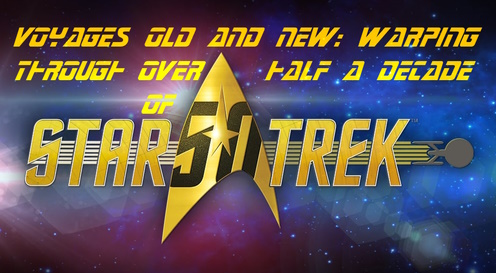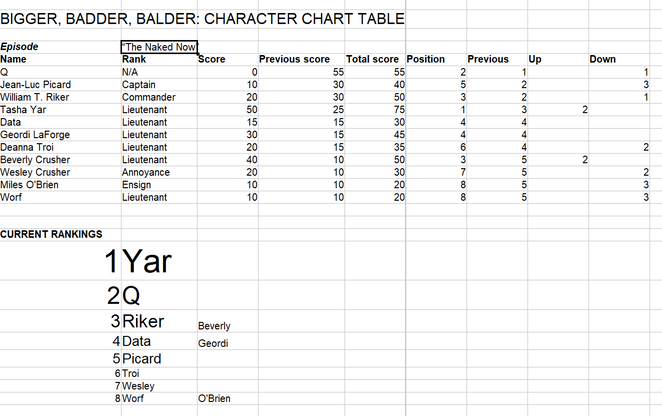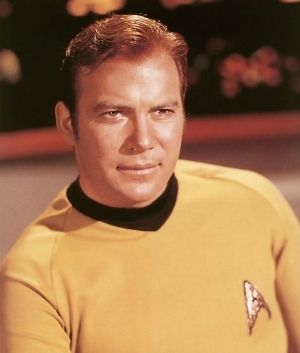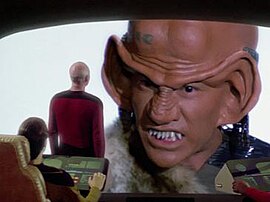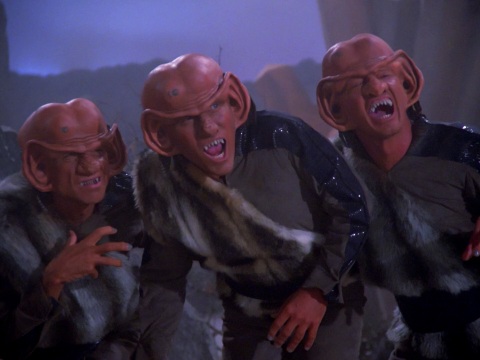For a very long time, television, like most arenas, was totally dominated by men. Men played the lead, men did the fighting, men did the figuring out, and invariably, men got the girls at the end. Women were there, if at all, as a kind of window-dressing, what is known today as eye candy; either something to attract the guys in and keep them occupied or, perhaps cynically, to give women some reason to go other than to ogle the male stars. I’m sure many a girl went to movies and sighed that they too one day could be the girl fainting on the arm of the hero, or rescued by the dashing knight. Women were really told they had very limited options, and Hollywood - and later TV - confirmed this by almost literally showing them their place.
Which isn’t to say that there weren’t some strong female characters on the screen - nobody would consider, for instance, Lauren Bacall a shrinking violet, and Mae West was, well, Mae West. Even Marilyn did her limited bit for women in film, confined though she was by the attitudes and beliefs of the times, her true acting ability only uncovered when she was cast in less than “fluff” or “sexy” roles, such as her last few movies. Some women, probably most, accepted this and wondered would it ever be different? Others considered trying to make it different, with varying, at the time, degrees of success.
But then, science fiction came along. This was new. This was the future. Things would be different in the brave new world of silver spaceships, killer robots, aliens and crossing the final frontier. Wouldn’t it?
Well, no.
Sadly, science fiction movies more or less stuck to the tropes set down by other genres - gangster, comedy, drama, western etc - and kept women where Hollywood wanted them: gazing adoringly into the eyes of the rugged space adventurer who would save them from the awful little green men, or execute complicated manoeuvres to save the ship at the last moment, or a dozen other things rugged space adventurers generally were expected to do while the weak silly girl looked on in awe and gratitude. Perhaps, if she was very lucky (or pretty) she might be allowed say a few words, but they would be irrelevant and probably directed to the rugged space adventurer who would do what all rugged space adventures did, laugh contemptuously and continue doing what rugged…. You know what? This is getting boring. You get it, right?
The idea in early (and not so early) science fiction seemed to be the classic nerd one, that “girls did not understand it” and were not interested in it. Women would not be able to handle the complexities of flying space ships, would not have the strength either physically or mentally to fight off aliens, and would be unable to work out the intricate and brain-twisting ideas behind such things as space flight, time travel and suspended animation, among others. Basically, science fiction was the preserve of men, and women, if there at all, were only along for the ride.
With the advent, then, of a brand new science fiction show which was going to reshape the entire genre, and TV drama too, things began to look up, though. Well, not quite. Considering that Star Trek was created by a self-confessed womaniser who seemed to luxuriate in his affairs and have little or no regard for women, holding “casting couch sessions” for bit-part actresses (and we all know what bit he wanted them to act on!) the cause for women was not terribly likely to be helped by this new show. And it wasn’t. Not initially anyway. It would take another twenty years before that would change, and even then only slowly would Gene Roddenberry give up his chauvinistic hold over how he believed women should be in his show. With his passing, the future began to look brighter for women, but it took time, as we will see.
And so I embark on a journey fraught with innuendo, sexual repression, chauvinism and the final cracking of the glass ceiling, as we look into
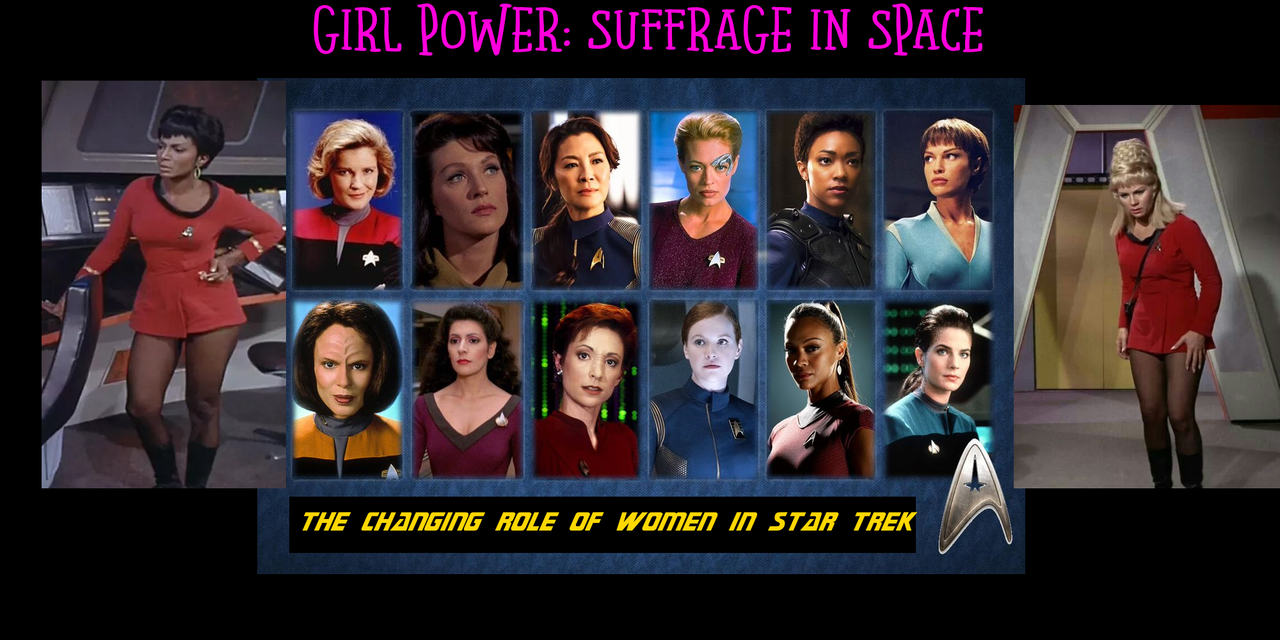
Part I: Just Stand There and Look Pretty:
1960s and the Original Series
Much has been made of Nichelle Nichols’s role on the show, her not being a maid, her being an active, major or at least major supporting character, but let’s be honest here: Uhura may have been a Lieutenant, but you got the feeling that the rank was almost nominal; she was pretty much the next best thing to a maid. Can you recall any episode in which she featured strongly, any episode that was about her, any episode in which she did anything? I can only think of two, and in one she was menaced and then kissed by Kirk (helpless female) and in the other she was wooed by Sulu. At least in that one she wasn’t helpless and she did hold her own, but then again, that was the mirror universe, and the Uhura there was meant to be the polar opposite of our one.
It has to be accepted that, for all she and the character did to advance the status of black females, and black actors in general on TV - remember “The Big Tall Wish” on The Twilight Zone, where the shock was that almost all the cast was (gasp!) black? And this didn’t stop with the sixties either. Name any major drama from the seventies or even eighties that had a black star? Sure there were some no doubt - though mostly in comedy roles - but they were definitely in the minority, and let’s not forget that even Michael Jackson could not get airplay on MTV until his label threatened to pull all the videos by their other artists. And this was in the late 1980s! So Uhura was no more than a glorified telephone operator, a receptionist taking Kirk’s calls and passing on messages; she had to wear the tiny skirt, she had few speaking lines other than “hailing frequencies open Captain” or something similar, and her contribution to the storylines almost always began and ended with whatever communications were coming into or going out of the ship.
To be depressingly accurate, I think Trelayne summed up the attitude towards women in general, and black women in particular, on television when, in “The Squire of Gothos”, seeing Uhura he grins to Kirk “A Nubian prize! Taken, no doubt, Captain, on one of your raids!”
Indeed. Women had a hard time on the show, but to be totally fair it wasn’t a problem unique to Star Trek. Women actors, writers, directors and producers had to fight to be heard, struggle to be taken seriously, and it was a long fight. We’ve still a long way to go, but thankfully the signs are looking more encouraging.
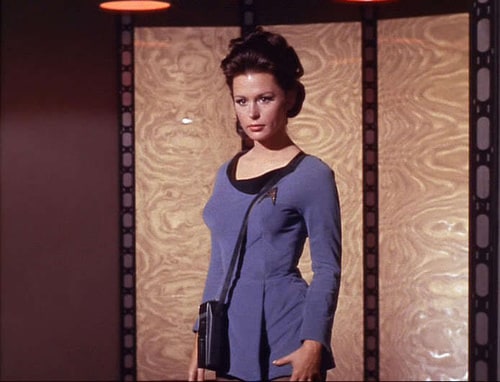
It’s not just Uhura that had a bad time on Star Trek though. She was, in fact, probably the most, if you like, emancipated woman on the show, which is saying something. In the original rewritten pilot “Where No Man Has Gone Before”, the female members of the crew were allowed to wear trousers. In the 1960s this might have seemed overly progressive, and Roddenberry’s leching aside, it’s not too hard to imagine an NBC executive (male of course, though famously it was Lucille Ball who saved the franchise) musing “I wonder if guys would rather see the girls’ legs?” Well of course they would, and so surely The Great Bird of the Galaxy would have needed little convincing to have wardrobe run up some sexy short dresses and skirts for them to wear, and order in a consignment of high-heeled boots previously worn by the Orion Slave Go-Go Girls!
And so, in pretty much one stroke, women were relegated back to sex objects, and horny teenagers like me salivated every time one walked across the bridge or down the corridor, and strained their eyes every time these ladies bent over, or were involved in a scene that caused them to fall. Pervert. Sure. Guilty as charged. But even leaving aside the mini skirts for a moment, that didn’t have to be the, if you will, emasculating factor for women in Star Trek. Many actresses at the time dressed sexy but were still powerful women. Diana Rigg could make you sit up and take notice (well, make something sit up anyway!) and yet she had command of the screen. Wonder Woman wore a flimsy skirt and bra but nobody was pushing her around! Even Agent 99 in secret agent spoof Get Smart was acknowledged as the clever one. So what was it about Star Trek that put women down so?

Many things, sadly. To be entirely fair, we are talking about the military here, and while the US Navy or the Royal Marines doesn’t exactly force its female members to wear tennis skirts, the attitude towards women in the armed forces has always been one of suspicion, jealousy, anger even. It’s like some woman walking into one of those old Gentleman’s Clubs in the fashionable parts of London in the nineteenth century, or women finally being accepted in golf clubs. Men, feeling this their preserve, their territory, and, probably, one of the few places they could get away from the little woman, were dismayed when she followed them there. Now the same can’t quite be said of the military, but there has been and probably always will be a sense of women horning in on what should be boys’ stuff: the girl getting into the tree house despite the sign, NO GIRLZ ALLOWED!
This isn’t to suggest that women were treated badly on the Enterprise, or any other starship. Far from it. On the surface (I say, on the surface) they’re treated as equals, though with the obvious disparity in ranks; this holds true for male crewmembers as well. But you don’t see any women in top roles. Until TNG there are no female captains (some admirals are introduced in TNG and I think there are female captains in perhaps “Conspiracy”?) and on NCC-1701 the highest rank a woman can be heard to attain appears to be Lieutenant, though these ranks seem to be almost an afterthought, as they usually refer to some sort of scientific posting - botanist, archaeologist, geologist etc - and I have never seen a woman officer armed, or at least draw her weapon.
Similarly, I have never - not in TOS - seen a female member, or a band of female members, go down to a planet alone. There is always a male with them, and almost always it is the fox among the chickens, as Kirk has to go everywhere. If there is trouble, you can bet it will be a case of “behind me Lieutenant!” with an unspoken suggestion she might admire his manly physique while he deals with the alien or other threat. Women, even officers, are there to be protected, and heaven forfend one should try to defend herself! In fairness, there is none of the so-called endearing names used - pet, honey, sweetheart, babe etc - though whether that’s down to personal choice or Starfleet protocol I don’t know. I imagine Starfleet might take a dim view of a captain so addressing his junior officers, although whether or not they would risk reporting him is another matter.
Junior officers. That’s a term to grab hold of, and keep hold of, as, like I said above, this is going to be something of a bumpy ride, as we address the Y word.
Yo, man! I mean, Yeoman! I mean, Yo-woman? Ah I give up!

Firstly, I’m not entirely sure why a man as capable as James T. Kirk needs a personal assistant. All right, the captain can’t do everything but can’t he delegate? Does he need an officer standing by with tricorder (looking very like a handbag) slung over the shoulder, pouting expressively and asking if he would like coffee? Isn’t this the height of male chauvinism in the military? Would any female officer or even cadet stand for this treatment today? Yet if we see a female on the bridge - other than Lieutenant Uhura - they are almost invariably what the show decided to term a Yeoman.
Let’s look at that word. Coined in the 14th century as a description of “the middle class of servant in a royal or noble household”, yeoman has basically died out now, as nobody is anyone’s servant anymore, and if used at all it is used in a strictly historical context. So why did Roddenberry feel it necessary to revive a remnant of an old, originally English, rank? Why call them yeomen? What they are, basically, is a combination secretary, PA, dogsbody, and substitute, it would seem, mother for the officers, especially for the captain, whose own yeoman, the most famous, Janice Rand, seems to follow him around with the attention of a mix of would-be lover and fretting mother, trying to make sure he eats, sleeps properly and exercises.
Does this nonsense not belong in the middle ages, at best in Victorian times? Why is it - despite the assertion there are male ones I’ve never seen a single one - that all yeomen appear to be not only female, but young, pretty and sexy ones too? It’s like Starfleet is saying “hey girls! You can serve on a starship just like a real crew member! You won’t have any status or rights, really, but you may get to serve the captain!” Charming. Though it’s certainly not mentioned, you have to wonder - on those long voyages of exploration, when a man is lonely and in need of female companionship, could a willing yeoman not be summoned to the captain’s cabin? We hear nothing of how he, um, entertains himself while on a mission. He has no girlfriend, no wife, and doesn’t seem to have a relationship with any woman on board the ship (all issues that would be later tackled in further incarnations of the series) so why not? Rand looks up for it. And if she’s not, well, he’s the captain isn’t he? What’s she going to do?
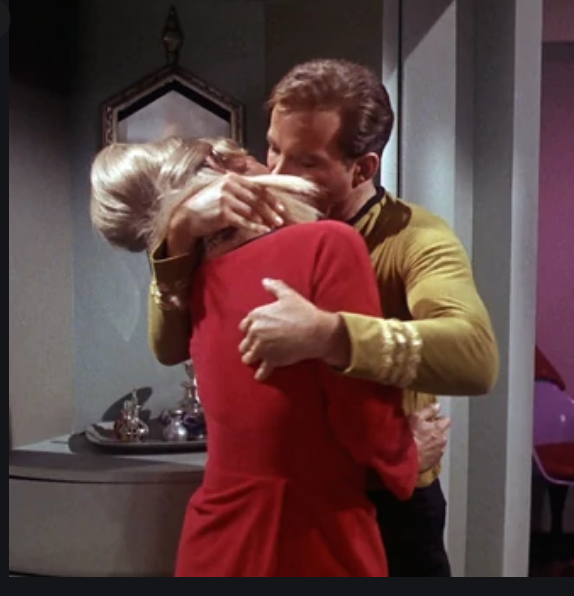
All right, that may be a dark interpretation and taking the duties of a yeoman a little far, and there may never have been any intention on the part of the writers that they would fulfill that role, but it does serve to illustrate that really, as Grace Lee Whitney herself described the role years later, they could be basically “space geishas”. I suppose with the US military (almost all military, to be fair, not just them) so men-only at the time, the idea of women serving on what is essentially a warship disguised as a scientific research and exploration vessel might have grated with many men (and some women) and so had to be justified. They can serve, but look, they’re really the future’s version of the typing pool. Your jobs are not under threat in the 24th century, lads!
It isn’t just the role of yeoman though that keeps women down in the original Trek. Largely, there’s little or nothing for them to do. If a story features a female, she’s either a) causing trouble and needs to be dealt with or b) in trouble because she foolishly blundered into things she should have left to the men. They almost always have to be either rescued or protected (the original pilot, while admittedly presenting a strong - and yet perhaps too strong, so that she seems more a man than a woman - female figure in Majel Barret’s Number One, is largely concerned with the efforts of the Talosians to convince Captain Pike to stay on the planet for the sake of the girl) and often place the Enterprise or the crew in danger by their “silly interfering”. Let’s look at some of those episodes now.




